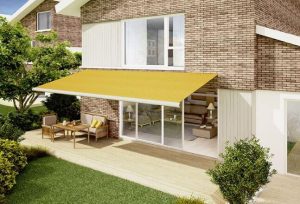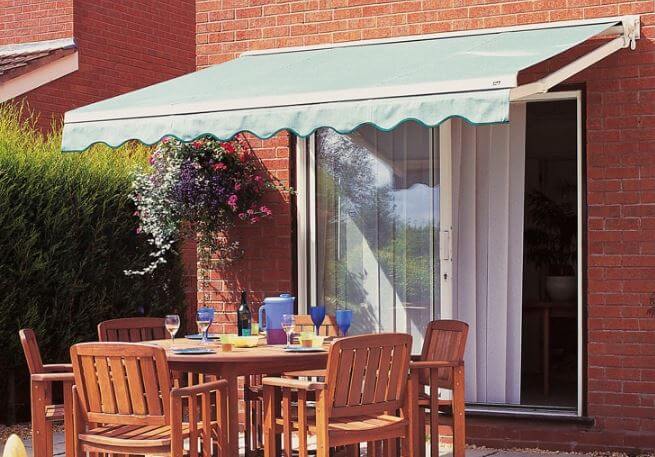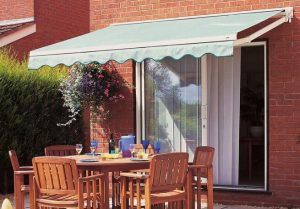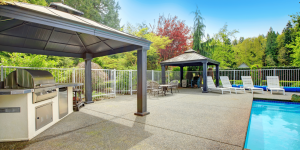Both awnings and canopies offer you the chance to create a calm, protected outdoor space to enjoy, whatever the weather. However, when purchasing an outdoor covering for their property, some people are unclear as to what the difference is between an awning and a canopy. First, let’s outline what’s the same about them.
Often we want to indulge in some time outside with the family, relaxing in the fresh air. However, the elements can get in the way of that yearning, and for many, awnings and canopies are the answer. They equip your garden with a protective overhang of material, keeping you and your outdoor furniture shielded from the glaring sun, UV radiation, rain, and wind, allowing you to enjoy your outside space in shade and comfort.
Awnings and canopies are made from similar materials to each other, that are designed to be durable and weatherproof, but there are several material options to choose from to suit your individual needs.
Despite their similarities, awnings and canopies also have their differences too.
Awnings
Awnings are sheets of material attached to the exterior of your home, fixed above a window or a door, and overhanging a porch, patio or walkway. They can offer shade and protection from the sun both outdoors and indoors, blocking the light from entering through windows, thus preventing artwork and furniture from fading, and also keeping it cool indoors.
Unlike canopies, awnings are a permanent fixture to the outside of your home and do not require any disassembly, though this does reduce flexibility. There are two main types of awnings: window awnings, and retractable awnings, which can fold away when they are not needed.
Because of their permanent state, awnings can act as a dry storage space for wet or muddy shoes and bikes; a preferable location over a hallway.
Awnings vary in length, but are are generally smaller than canopies. However, it’s important to choose the right size for your requirements. If you require a space to hold parties and BBQs, then a bigger awning may be better, or possibly a canopy.
A range of colours, patterns and styles are available to suit the architecture of any house. Remember that awnings are a permanent structure and therefore it’s advisable to choose some that complement the current style and decor of your garden, taking into account your garden furniture and window dressings.
Awning are also widely used as a fixture for motorhomes and campervans, offering a relaxed dining area.
Canopies
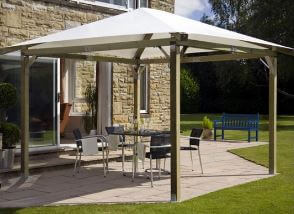
Canopies are often large, free-standing coverings, used to provide shade and protection from the elements for a seated, outside area. They are made from a large canvas of a durable fabric, strung over a metal frame and between supporting posts. However, they can sometimes be placed directly next to your windows and doors, which is perhaps why people sometimes confuse them with awnings.
Canopies tend to be bigger than awnings, making them more suitable for gatherings, parties and BBQs.
They are portable, and are easily disassembled and stored away when not in use. Because they are transportable, they are also ideal for outdoor events, festivals or trips to the park.
Because they are not anchored in one place, canopies offer more flexibility than awnings, allowing you to choose exactly where you want to set up your shaded space.
